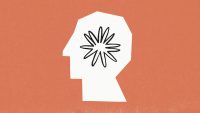Anthropic has launched a powerful new AI model, Claude 3.5 Sonnet, that can analyze text and images and generate text. That its release comes a mere three months after Anthropic debuted Claude 3 indicates just how quickly the field is developing. The Google-backed company says Claude 3.5 Sonnet has set “new industry benchmarks for graduate-level reasoning (GPQA), undergraduate-level knowledge (MMLU), and coding proficiency (HumanEval).” Sonnet is Anthropic’s mid-tier model, between Haiku and, on the high-end, Opus. Anthropic says 3.5 Sonnet is twice as fast as 3 Opus, offering “frontier intelligence at 2x the speed.”
Claude 3.5 Sonnet “shows marked improvement in grasping nuance, humor, and complex instructions, and is exceptional at writing high-quality content with a natural, relatable tone,” Anthropic claims in a news post that shares internal test benchmarks showing 3.5 Sonnet outperformed OpenAI’s GPT-4o, Google’s Gemini 1.5 Pro and Meta’s Llama 400b.

“The models and products are changing so fast that nobody seems to have a lead for very long,” The Verge contextualizes, adding “that said, Claude 3.5 Sonnet does look impressive.”
“Vision — analyzing photos — is one area where Claude 3.5 Sonnet greatly improves over 3 Opus, according to Anthropic,” reports TechCrunch. “Claude 3.5 Sonnet can interpret charts and graphs more accurately and transcribe text from ‘imperfect’ images, such as pics with distortions and visual artifacts.”
Claude 3.5 Sonnet is available free on the web and on iOS. The developer version, Claude Pro, as well as the Team plan for enterprise are offered as part of those paid subscriptions “with significantly higher rate limits,” Anthropic says. It is also available via the Anthropic API, Amazon Bedrock, and Google Cloud’s Vertex AI.
Anthropic is also rolling out a new feature called Artifacts that “expands how users can interact with Claude,” organizing the AI-generated work in a pop-up window designed to better integrate that output into an organization’s projects and workflows.
Anthropic CEO Dario Amodei tells Reuters that Artifacts is a step toward teams “being able to work collaboratively” and “being able to use your model to produce finished products.” CNBC predicts Artifacts will be “useful for code development, legal contract drafting and analysis, business report writing and more.”
“In the near future, teams — and eventually entire organizations — will be able to securely centralize their knowledge, documents, and ongoing work in one shared space, with Claude serving as an on-demand teammate,” Anthropic says, noting the feature “marks Claude’s evolution from a conversational AI to a collaborative work environment.”

No Comments Yet
You can be the first to comment!
Leave a comment
You must be logged in to post a comment.